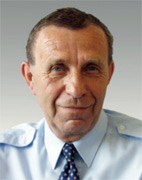The 11th Dvořák Lecture
The emergence of the “Internet of Things” and the explosion of Artificial Intelligence/Machine Learning applications are likely to push up significantly the market for microelectronics. The related energy consumption could increase by 20–25%. Thus, looking for a new generation of ultralow power memories and switches is an area of significant current research. Perovskite oxides exhibit a rich spectrum of functional responses, including magnetism, ferroelectricity,...













